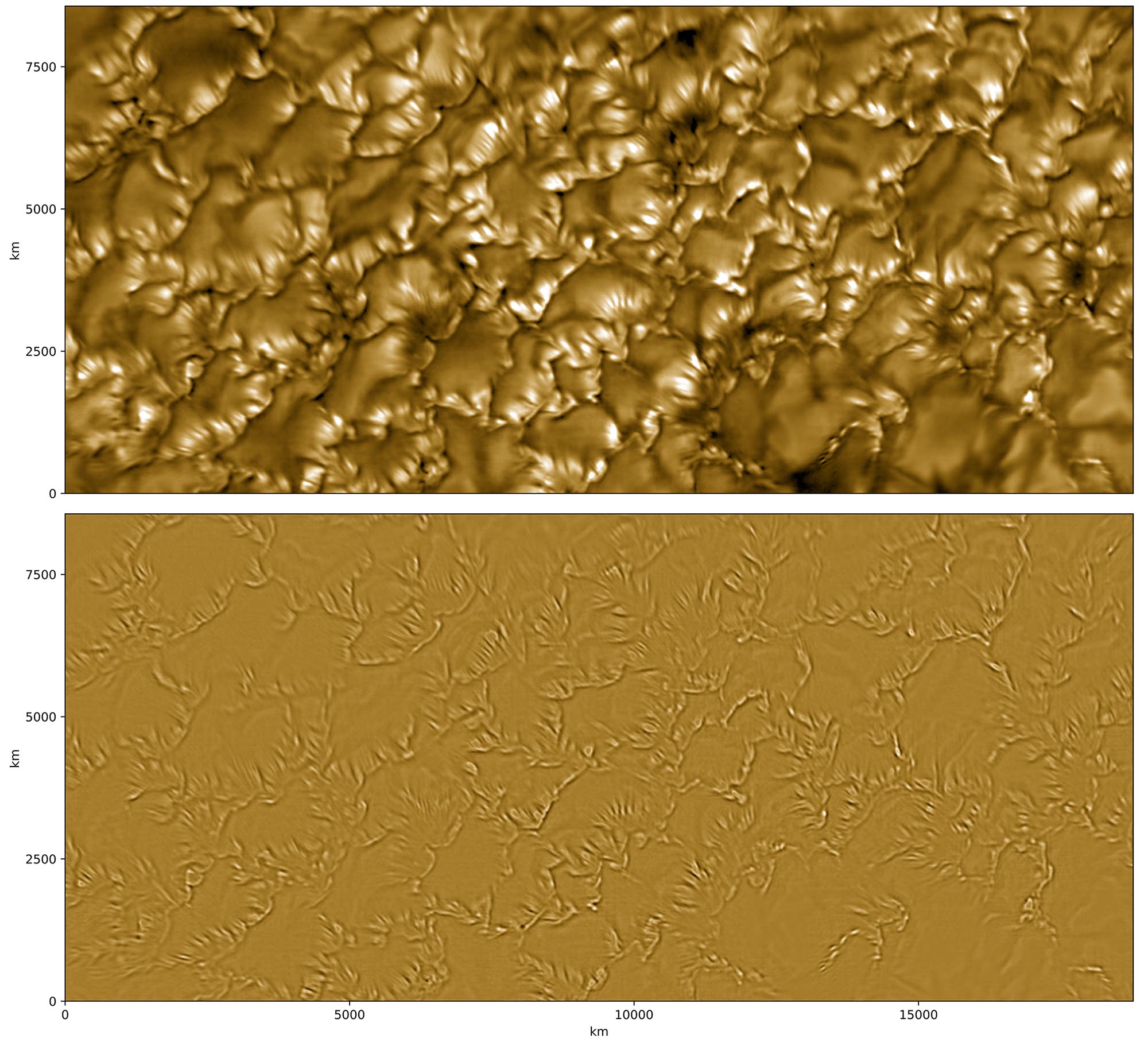Magnetic Curtains on the Sun: NSF Inouye Solar Telescope Reveals Ultra-Fine Striations in Solar Surface

NSF DANIEL K. INOUYE SOLAR TELESCOPE CAPTURES SHARPEST-EVER VIEW OF THE SOLAR SURFACE TO REVEAL OUR FINEST LOOK AT NARROW MAGNETIC STRIPE-LIKE FEATURES KNOWN AS STRIATIONS
Maui, Hawai‘i; June 3, 2025 – A team of solar physicists has released a new study shedding light on the fine-scale structure of the Sun’s surface. Using the unparalleled power of the U.S. National Science Foundation (NSF) Daniel K. Inouye Solar Telescope, built and operated by the NSF National Solar Observatory (NSO) on Maui, scientists have observed, for the first time ever in such high detail, ultra-narrow bright and dark stripes on the solar photosphere, offering unprecedented insight into how magnetic fields shape solar surface dynamics at scales as small as 20 kilometers (or 12.4 miles). The level of detail achieved allows us to clearly link these stripes to the ones we see in state-of-the-art simulations—so we can better understand their nature.
These stripes, called striations and seen against the walls of solar convection cells known as granules, are the result of curtain-like sheets of magnetic fields that ripple and shift like fabric blowing in the wind. As light from the hot granule walls passes through these magnetic “curtains,” the interaction produces a pattern of alternating brightness and darkness that traces variations in the underlying magnetic field. If the field is weaker in the curtain than in its surroundings it appears dark, if it is relatively stronger it appears bright.
“In this work, we investigate the fine-scale structure of the solar surface for the first time with an unprecedented spatial resolution of just about 20 kilometers, or the length of Manhattan Island,” says NSO scientist Dr. David Kuridze, the study’s lead author. “These striations are the fingerprints of fine-scale magnetic field variations.”
The findings were not anticipated, and only possible because of the Inouye Solar Telescope’s unprecedented abilities. The team used the Inouye’s Visible Broadband Imager (VBI) instrument operating in the G-band, a specific range of visible light especially useful for studying the Sun because it highlights areas with strong magnetic activity, making features like sunspots and fine-scale structures like the ones in the study easier to see. The setup allows researchers to observe the solar photosphere at an impressive spatial resolution better than 0.03 arcseconds (i.e., about 20 kilometers on the Sun). This is the sharpest ever achieved in solar astronomy. To interpret their observations, the team compared the images with cutting-edge simulations that recreate the physics of the Sun’s surface.
The study confirms that these striations are signatures of subtle but powerful magnetic fluctuations—variations of only a hundred gauss, comparable to a typical refrigerator magnet’s strength—that alter the density and opacity of the plasma, shifting the visible surface by mere kilometers. These shifts, known as Wilson depressions, are detectable thanks only to the unique resolving power of the 4-meter primary mirror of the NSF Inouye Solar Telescope, the largest in the world.
NSF NSO is managed by the Association of Universities for Research in Astronomy (AURA) under a cooperative agreement with NSF.
